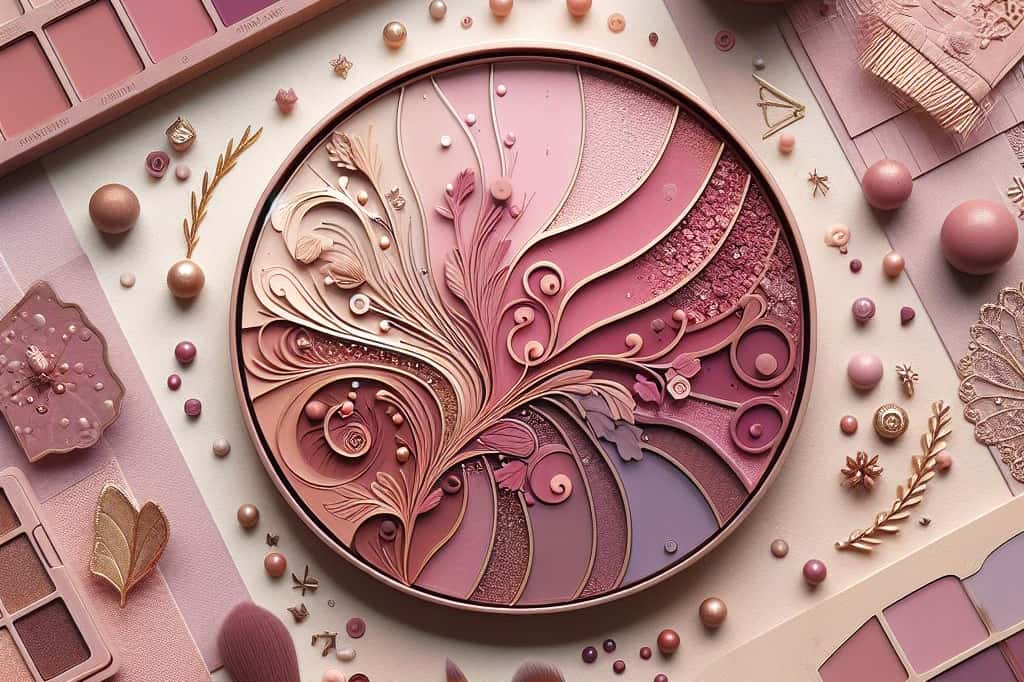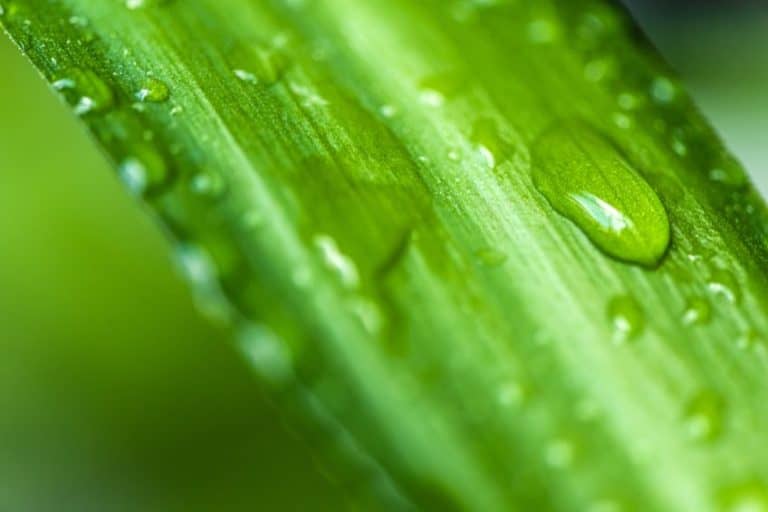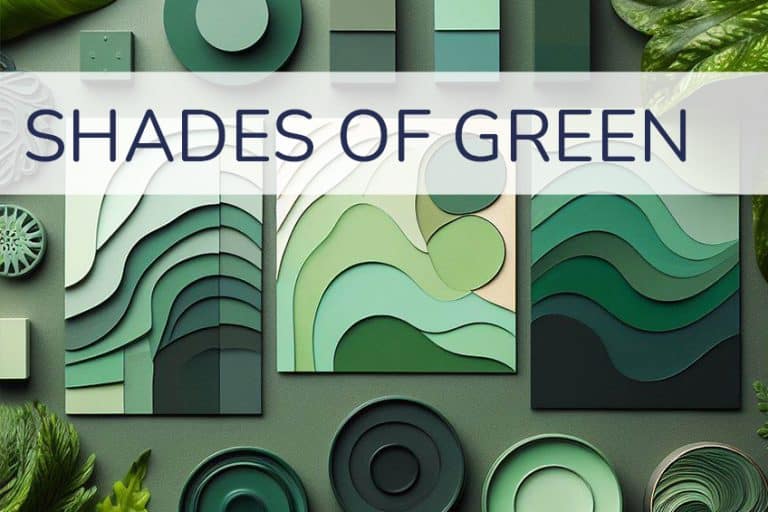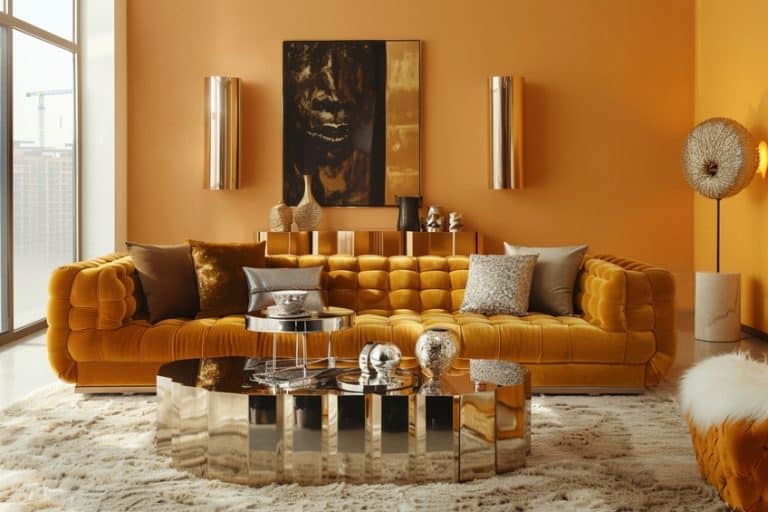Meaning of the Color Puce – The Rich History Behind the Color
Welcome to the vibrant world of color! Today, we delve into the enigmatic realm of puce—a hue that tantalizes the senses and sparks curiosity. Often overlooked yet endlessly fascinating, puce invites us to unravel its mysteries and explore the depths of its meaning. From its humble origins to its modern-day interpretations, join us on a colorful journey as we uncover the nuances and significance behind the captivating shade of puce.
Table of Contents
Key Takeaways
- Puce’s brownish-purple hue has historical roots back to French royalty.
- The color embodies a mix of sophistication, creativity, and stability.
- It is often used in design to evoke a calming and refined aesthetic.
Historical Significance of Puce
| Shade | Hex Code | CMYK Color Code (%) | RGB Color Code | Color |
| Puce | #CC8899 | 0, 25, 20, 20 | 204, 136, 153 |
Puce is a color that carries a rich and varied history, standing out with its brownish-purple hue that has seen fluctuating popularity over the years. First recognized in the 18th century, the term “puce” originates from the French “couleur puce,” which translates to ‘flea color,’ supposedly reflecting the color of bloodstains left by fleas on linen. Historically significant, it found favor in the French royal court, particularly associated with the fashion of Marie Antoinette. Puce has a distinguished place in fashion history and royal connotations, backed by its unique color composition derived from nature.
Its use in textile hues has been both a statement of sophistication and authority.

Analyzing the meaning of puce, it navigates a spectrum of human emotions and cultural associations. Purple, which is closely related to puce, often symbolizes royalty, wisdom, and luxury, while brown tones add a grounding, stable element. Puce, not as vibrant as red, conveys a more subdued, sophisticated presence. This color can also evoke a sense of creativity, reliability, and power. In color psychology, puce is believed to offer a calming effect, and its utilization in design and art reflects its complex symbolism.
Origins in French Fashion
The color puce was first popularized in the late 18th century within French fashion circles. It is derived from the French word for “flea” and represents the color of a flea, or more pointedly, the color of a squashed flea which may be seen on bedsheets.
This earthy, brownish-purple tone quickly became a favored choice in the silken garments of the French court.
Association With Louis XVI
The association of puce with French royalty is particularly strong due to its ties to Louis XVI and Marie Antoinette. The monarch himself is believed to have coined the term “puce” to describe the shade of one of Marie Antoinette’s gowns. As such, the color symbolizes the sophisticated tastes of the royalty during that era.

Color Composition
By composition, puce is a mix of red and purple with brown tones, creating a muted, subdued hue. In textile applications, this gave a rich yet understated appearance, which could have contributed to its popularity among the fashionably elite.
Understanding Hex Codes
In modern digital design, colors are often represented using hex codes—a six-digit combination of letters and numbers. For puce, this hex code can vary due to its subtle mix, but one accepted representation is #722F37. This exactitude allows for consistency across electronic media, ensuring that the historical significance of puce retains its visual accuracy.

The Meaning of the Color Puce
The color puce, with its distinctive hue blending tones of deep red and muted purple, carries within its essence a rich tapestry woven from the threads of cultural heritage and psychological symbolism, intertwining narratives of history, emotion, and perception into a complex and intriguing whole.

Positive Associations
- Elegance: Puce is often regarded as an elegant color, suggesting a sense of sophistication and classic style.
- Warmth: The deep reddish-brown hue of puce is associated with warmth and comfort, providing a cozy atmosphere.

Negative Associations
- Dullness: Some perceive puce as a muted or dull color, potentially conveying lack of excitement or vibrancy.
- Outdatedness: Due to its historical associations, puce can be seen as an old-fashioned color, sometimes connected with past eras rather than contemporary trends.
Personality Traits Associated With Puce
Puce is a color that conveys a range of personality traits grounded in stability and sophistication. Individuals drawn to puce may exhibit confidence and strength, aligning with the color’s historical ties to authority and power. This dark reddish-brown hue imbues a sense of security and resilience, often chosen by those who are self-assured and command respect. Stability and reliability are key characteristics associated with puce. It’s a choice for someone who values tradition and a solid foundation, reflecting a personality that is dependable and trustworthy.
These individuals often prioritize creating a peaceful environment, utilizing puce for its calming effects.
Puce can also indicate a personality that appreciates luxury and sophistication. Its historical connection to royalty and fashion suggests that those drawn to this color might gravitate towards elegance and the finer things in life. Their personality may reflect a combination of creativity and wisdom, with a penchant for mature self-expression. In summary, the following traits are commonly linked to the color puce:
- Confidence: Representing a composed demeanor and self-certitude.
- Strength: Symbolizing an enduring and potent character.
- Stability: Reflecting a dependable and constant nature.
- Reliability: Indicating trustworthiness and responsibility.
- Sophistication: Associated with a taste for elegance and refinement.
- Creativity and wisdom: Showcasing inventive thinking coupled with insightful judgment.
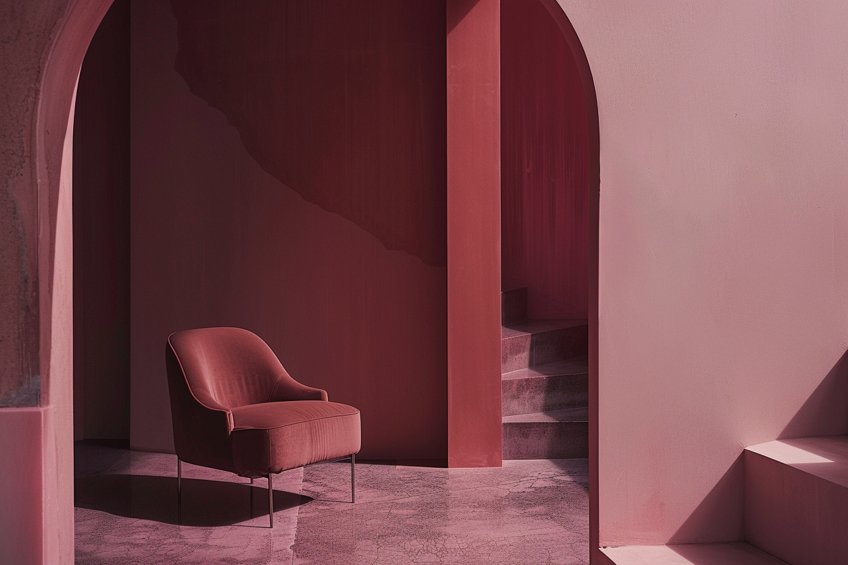
Colors Related to Puce
| Shade | Hex Code | CMYK Color Code (%) | RGB Color Code | Color |
| Purple | #800080 | 0, 100, 0, 50 | 128, 0, 128 | |
| Brown | #A52A2A | 0, 60, 60, 65 | 165, 42, 42 | |
| Burnt Sienna | #E97451 | 0, 50, 67, 11 | 233, 116, 81 | |
| Pink | #FFC0CB | 0, 24, 14, 0 | 255, 192, 203 | |
| Mauve | #E0B0FF | 10, 20, 0, 0 | 224, 176, 255 |
Puce is a unique and versatile color that shares characteristics with several colors. This section explores its relationship with colors that are either components of Puce or share a similar aesthetic.

Purple
Puce has a strong purple component, making it related to various shades of purple. This relationship places Puce in the family of colors often associated with royalty and creativity.
Brown
The brown aspect of Puce adds an earthy quality to its appearance. Brown in Puce provides depth and grounds the color, linking it to nature and stability.

Burnt Sienna
Burnt Sienna, a reddish-brown hue, complements Puce with its warm undertones. This color alliance enhances Puce’s versatility in design and art.
Pink
The softness of pink is evident in Puce, giving it a gentle and calming presence. Pink’s influence makes Puce suitable for applications requiring subtlety and warmth.
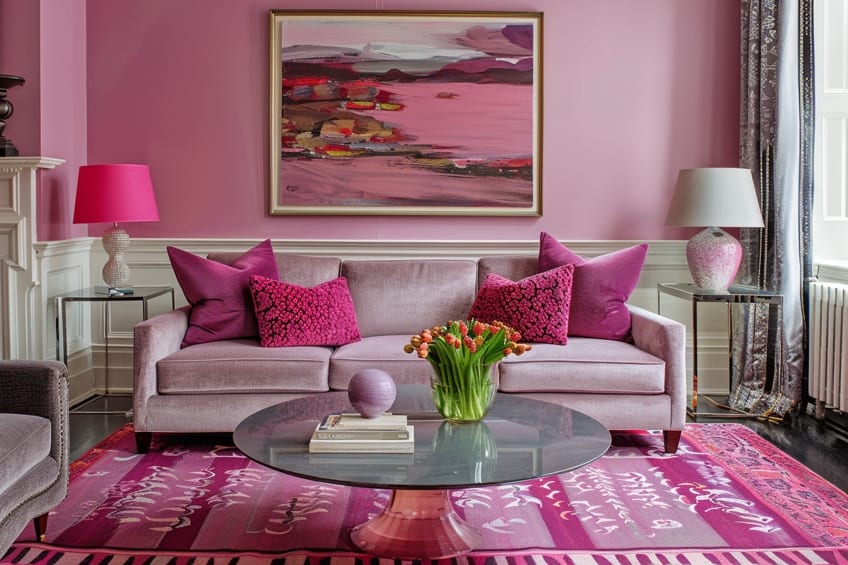
Mauve
Mauve, like Puce, is a derivative of purple, but with a grayish tone. The two colors share a sophisticated palette, commonly found in fashion and decor.
Color Combinations That Work With Puce
When considering puce, a striking color with roots in brownish purple and dark reddish-brown hues, understanding its versatility in color pairings is essential. Harmony in design is achieved through thoughtful color combinations, and puce is no exception.

Complementary Colors
| Shade | Hex Code | CMYK Color Code (%) | RGB Color Code | Color |
| Puce | #CC8899 | 0, 25, 20, 20 | 204, 136, 153 | |
| Complementary Green | #889966 | 39, 0, 63, 40 | 136, 153, 102 |
A complement to puce on the color wheel is a shade of green. The contrast between the earthy depth of puce and a vibrant green can create energy in a design.
Analogous Colors
| Shade | Hex Code | CMYK Color Code (%) | RGB Color Code | Color |
| Deep Mauve | #C8A2C8 | 0, 31, 0, 20 | 200, 162, 200 | |
| Soft Red | #D68A80 | 0, 33, 40, 14 | 214, 138, 128 |
Analogous colors sit next to each other on the color wheel. For puce, selecting colors like deep mauves, pinks, and softer reds can enhance its warmth.

Monochromatic Scheme
| Shade | Hex Code | CMYK Color Code (%) | RGB Color Code | Color |
| Lighter Puce | #E8AAB9 | 0, 30, 19, 10 | 232, 170, 185 | |
| Darker Puce | #A56676 | 0, 46, 32, 59 | 165, 102, 118 |
Using various shades and tints of puce itself provides a sophisticated and cohesive look.
Neutral Combinations
| Shade | Hex Code | CMYK Color Code (%) | RGB Color Code | Color |
| Beige | #F5F5DC | 0, 0, 10, 4 | 245, 245, 220 | |
| Grey | #808080 | 0, 0, 0, 50 | 128, 128, 128 |
Pairing puce with neutrals such as grey, beige, or ivory can evoke elegance.

Nature-Inspired Palettes
| Shade | Hex Code | CMYK Color Code (%) | RGB Color Code | Color |
| Olive Green | #808000 | 0, 0, 100, 50 | 128, 128, 0 | |
| Tan | #D2B48C | 0, 16, 29, 15 | 210, 180, 140 |
Earthy tones such as olive greens, tans, or ochres can draw out puce’s natural qualities.
Metallics for Contrast
| Shade | Hex Code | CMYK Color Code (%) | RGB Color Code | Color |
| Gold | #FFD700 | 0, 0, 100, 0 | 255, 215, 0 | |
| Bronze | #CD7F32 | 0, 31, 68, 20 | 205, 127, 50 |
Metallic colors like gold or bronze can accentuate puce’s inherent richness, making it suitable for luxurious themes. Incorporating puce into various color palettes offers designers the flexibility to create visual interest, from subtle and sophisticated to bold and dynamic compositions.
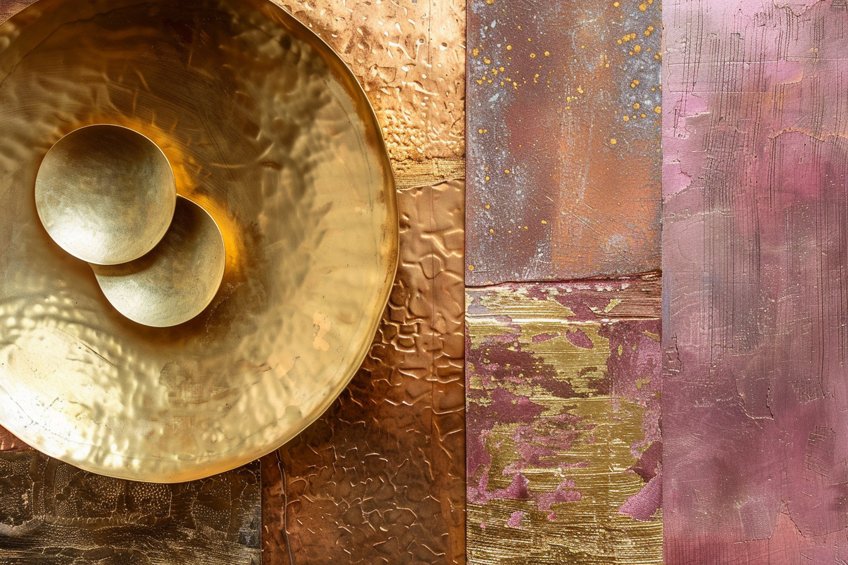
Color Psychology and Symbolism
In the realm of color psychology and symbolism, puce occupies a unique position with its purplish-brown hue and historical significance. This section unfolds the cultural perceptions attached to the color and the psychological effects it may elicit.
Cultural Perceptions
Puce, a color with the hex code #CC8899, manifests as a blend of purple and brown shades. Historically, the word “puce” originates from the French couleur puce, translating to “flea color,” a reference to the color of flea droppings or bloodstains on linen. In the court of Louis XVI, puce earned acclaim, reportedly favored by Marie Antoinette. Over the centuries, it has signified authority and power, often embraced in corporate environments to project confidence and stability.

Psychological Effects
The psychological influence of color cannot be understated, and puce is no exception. Individuals may find puce to be a calming and soothing presence, ushering in feelings of tranquility. It’s associated with reliability and comfort, suggesting an ambiance conducive to relaxation.
Despite its sometimes understated appearance, puce retains a subtle vitality that contributes to a sense of grounded confidence and authority.
Puce in Design and Art
Puce is a unique color that straddles the boundary between reddish-brown and purple, lending a deep, rich tone to various design and art contexts.

Interior Design Use
In home decor, puce serves as a versatile backdrop or accent shade in interior design. Its richness contributes warmth to living spaces, while the various shades of puce offer designers a broad palette for creative expression. One might find puce shades complementing contemporary furniture as well as being featured in accessories for a subtle, yet impactful, statement.
The use of puce in fabrics, from upholstery to curtains, can add layers of depth to a room’s aesthetic.
Influence in Artwork
Artists often adopt puce for its suggestive qualities that elicit an emotional response. Puce’s presence in art can signify sophistication or earthiness, depending on its context and the other colors it’s paired with. This hue has found a place in digital art and web design, where its versatile nature can be utilized to create depth or draw focus. Puce harmonizes well with both muted and vibrant color schemes, making it an adaptable choice for artists who wish to make a deliberate and refined statement.

As we conclude our exploration into the captivating world of puce, we’re reminded that color is not merely a visual sensation, but a language that speaks to our emotions, culture, and history. Through its subtle complexities and surprising depths, puce has demonstrated its ability to intrigue and inspire. Whether it evokes feelings of nostalgia, elegance, or whimsy, puce serves as a reminder that the world of color is rich with meaning waiting to be discovered. So, let us continue to embrace the kaleidoscope of hues that surrounds us, for in each shade lies a story waiting to be told and a journey waiting to be embarked upon!
Frequently Asked Questions
What Does the Color Puce Symbolize in Different Cultures?
In many cultures, puce is associated with a sense of sophistication and power due to its close relation to purple, which has historical ties to royalty and wisdom. It also embodies concepts of stability and creativity.
How Is the Color Puce Used in Fashion and Design?
Puce has seen its prominence in fashion and design, particularly in the 18th and 19th centuries in France. Known for its reddish-brown or purplish-brown hue, it lends a sophisticated and subdued feel to clothing and interiors, often favored for its versatility and subtle richness.
How Do People Typically Perceive the Color Puce?
The perception of puce can vary; however, it is often seen as a calming and soothing color. Its understated elegance can convey reliability and a grounded sense of tranquility, making it a choice for settings that desire a stabilizing atmosphere.
In 2005, Charlene completed her Wellness Diplomas in Therapeutic Aromatherapy and Reflexology from the International School of Reflexology and Meridian Therapy. She worked for a company offering corporate wellness programs for a couple of years, before opening up her own therapy practice. It was in 2015 that a friend, who was a digital marketer, asked her to join her company as a content creator, and this is where she found her excitement for writing.
Since joining the content writing world, she has gained a lot of experience over the years writing on a diverse selection of topics, from beauty, health, wellness, travel, and more. Due to various circumstances, she had to close her therapy practice and is now a full-time freelance writer. Being a creative person, she could not pass up the opportunity to contribute to the Art in Context team, where is was in her element, writing about a variety of art and craft topics. Contributing articles for over three years now, her knowledge in this area has grown, and she has gotten to explore her creativity and improve her research and writing skills.
Charlene Lewis has been working for artincontext.org since the relaunch in 2020. She is an experienced writer and mainly focuses on the topics of color theory, painting and drawing.
Learn more about Charlene Lewis and the Art in Context Team.
Cite this Article
Charlene, Lewis, “Meaning of the Color Puce – The Rich History Behind the Color.” Art in Context. March 5, 2024. URL: https://artincontext.org/meaning-of-the-color-puce/
Lewis, C. (2024, 5 March). Meaning of the Color Puce – The Rich History Behind the Color. Art in Context. https://artincontext.org/meaning-of-the-color-puce/
Lewis, Charlene. “Meaning of the Color Puce – The Rich History Behind the Color.” Art in Context, March 5, 2024. https://artincontext.org/meaning-of-the-color-puce/.


